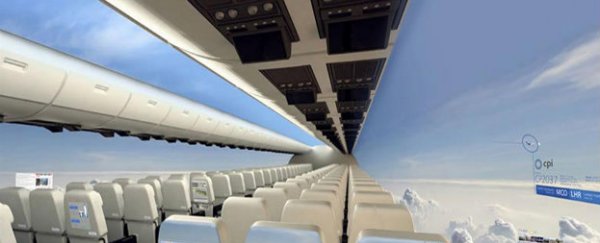The concept of windowless planes may seem futuristic and perhaps frightening for some travellers, but smartscreen panels are tipped to replace aircraft windows in 10 years, cutting down both fuel consumption and airfares.
Over 832 thousand litres of fuel are used and 700 million tonnes of carbon dioxide is released into the environment each year as a result of air travel. The aviation industry is constantly looking for ways to reduce the weight of aircraft, which would cut fuel consumption and airfares.
So researchers are now developing a windowless plane, in which the heavy windows and cabin walls of current planes would be replaced with lightweight full-length smart displays. According to the Centre for Process Innovation (CPI) in the UK, which is the company behind the innovative design, 80 percent of an airline's weight is due to fuel and the plane itself, so removing the windows could save on running costs.
"By putting windows into a plane, the fuselage needed to be strengthened," Jon Helliwell, a chemist and Director of the CPI, told Shane Hickey from The Guardian. "And by omitting them in favour of walls of screens on panels, the fuselage would be lighter."
The team envisions that windows would be replaced with hi-definition, ultra-thin and lightweight screens that display the outside world through cameras that are mounted on the plane's exterior. Passengers would be able to control their view with the interactive technology, and could also use the display to browse the Internet.
"So you could have a display next to a seat if you wanted it; you could have a blank area next to a seat if you wanted it; you would have complete flexibility as to where you put [the panel screens]. You could put screens on the back of the seats in the middle and link them to the same cameras," Helliwell told Hickey from The Guardian.
The screens would be made from organic light-emitting diodes (OLED's) and wouldn't require a backlight, which means they'd use less energy and can be thinner than other displays such as LCD and plasma.
The main obstacle to overcome in the design is to create flexible OLEDs that can be used in an aeroplane-ready screen that's both durable and relatively cheap to manufacture. The team is currently using advanced equipment to fine-tune the OLEDs, and hope that the concept will become a reality in the next 10 years.
Watch this video to find out more about this unique design:
Source: The Guardian
